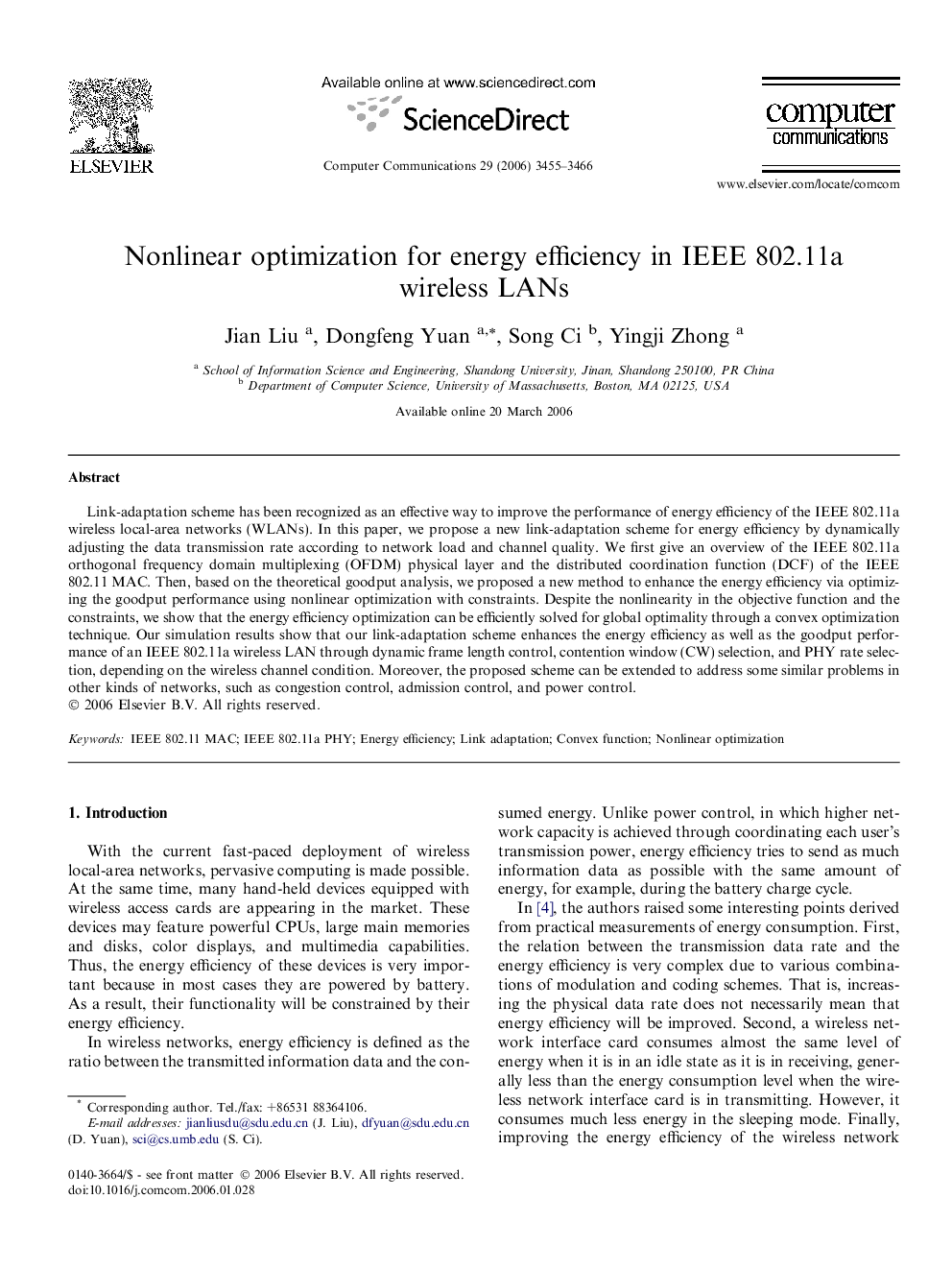| Article ID | Journal | Published Year | Pages | File Type |
|---|---|---|---|---|
| 447319 | Computer Communications | 2006 | 12 Pages |
Link-adaptation scheme has been recognized as an effective way to improve the performance of energy efficiency of the IEEE 802.11a wireless local-area networks (WLANs). In this paper, we propose a new link-adaptation scheme for energy efficiency by dynamically adjusting the data transmission rate according to network load and channel quality. We first give an overview of the IEEE 802.11a orthogonal frequency domain multiplexing (OFDM) physical layer and the distributed coordination function (DCF) of the IEEE 802.11 MAC. Then, based on the theoretical goodput analysis, we proposed a new method to enhance the energy efficiency via optimizing the goodput performance using nonlinear optimization with constraints. Despite the nonlinearity in the objective function and the constraints, we show that the energy efficiency optimization can be efficiently solved for global optimality through a convex optimization technique. Our simulation results show that our link-adaptation scheme enhances the energy efficiency as well as the goodput performance of an IEEE 802.11a wireless LAN through dynamic frame length control, contention window (CW) selection, and PHY rate selection, depending on the wireless channel condition. Moreover, the proposed scheme can be extended to address some similar problems in other kinds of networks, such as congestion control, admission control, and power control.
